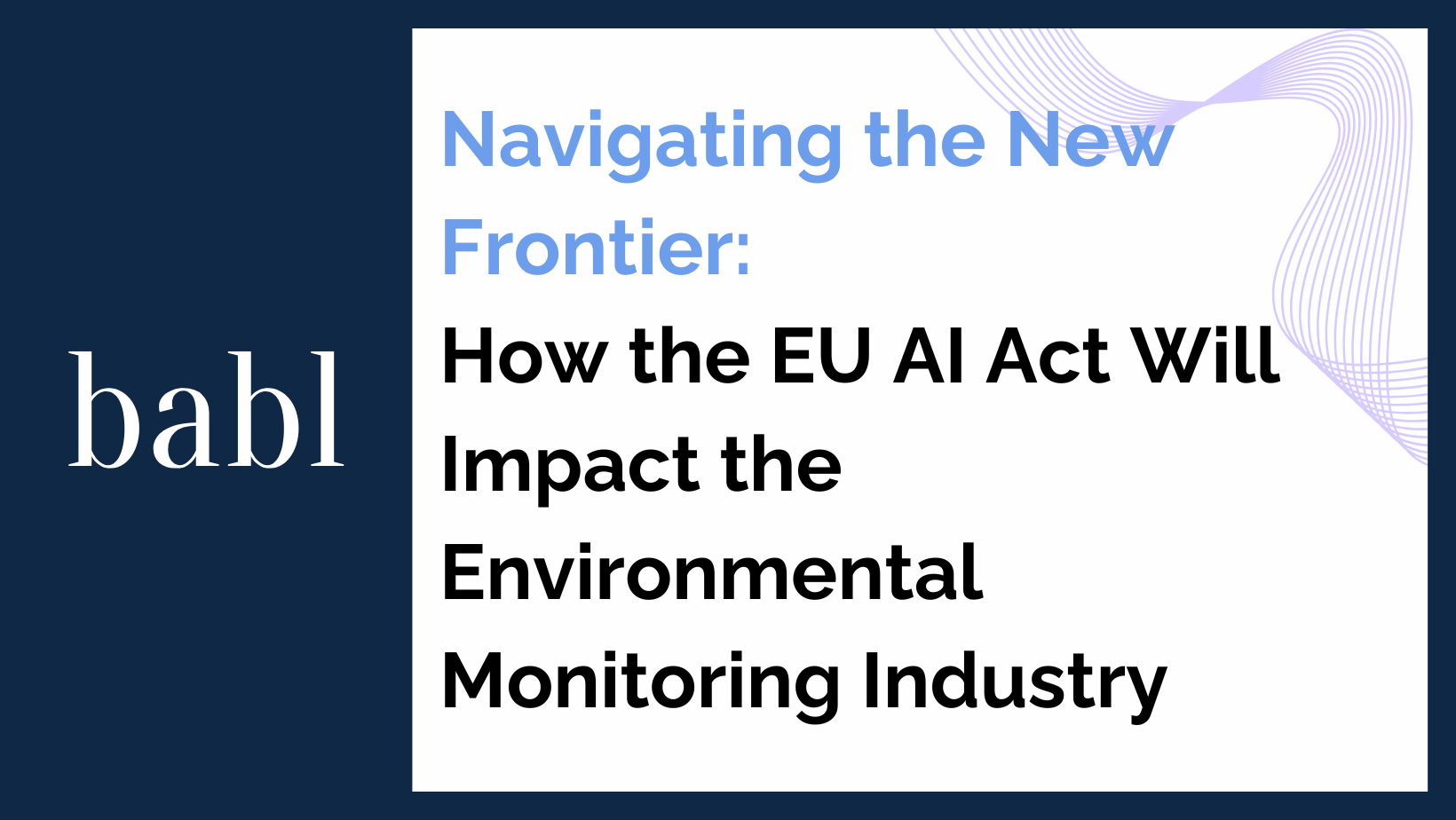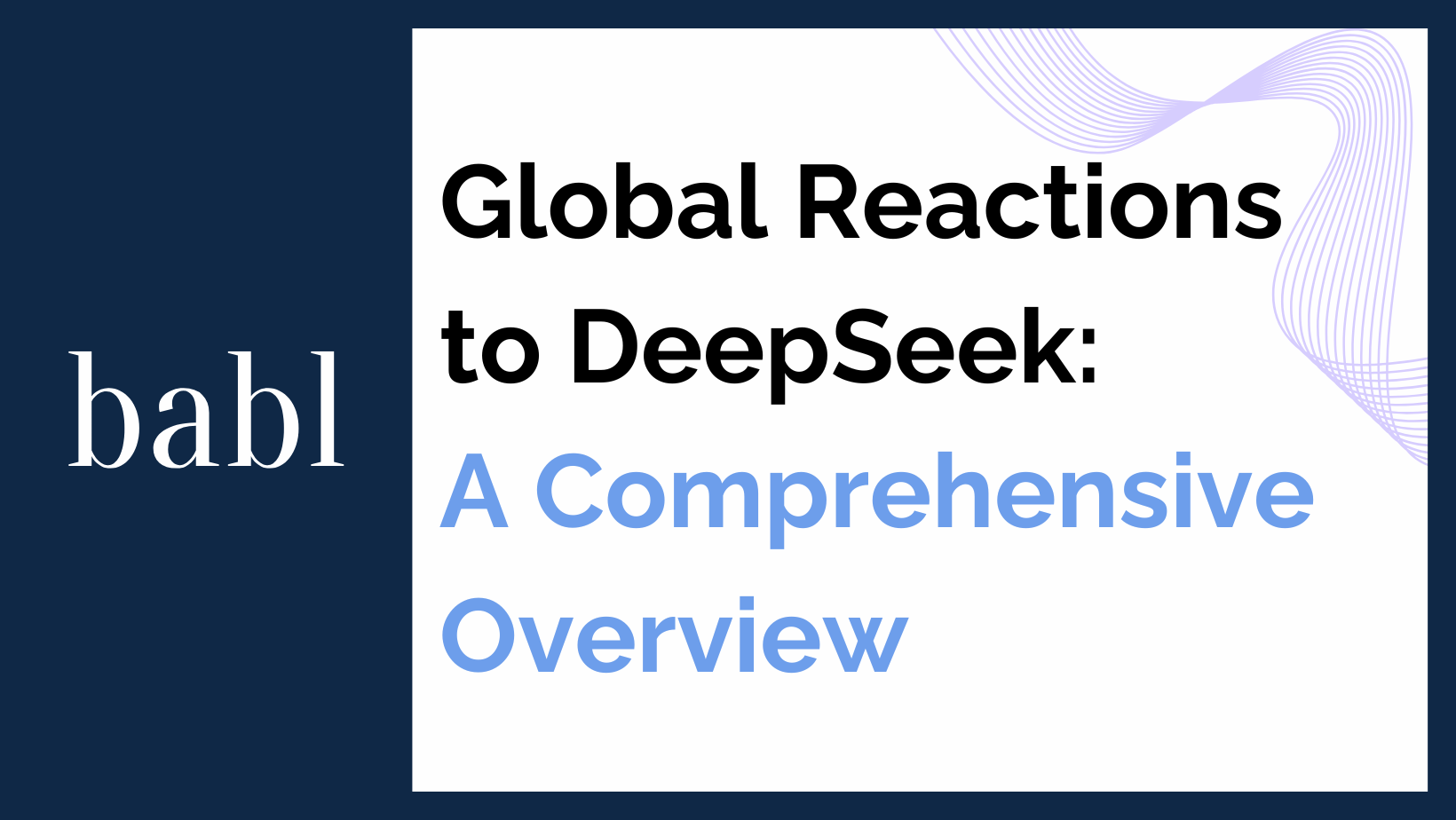The EU AI Act is set to be a transformative regulatory framework that will significantly influence various sectors, including environmental monitoring. As AI technologies become increasingly integral to managing and protecting the environment, the EU AI Act aims to ensure these technologies are used ethically, transparently, and safely. This blog post explores the implications of the EU AI Act for the environmental monitoring industry, highlighting both the opportunities and challenges it presents.
The Role of AI in Environmental Monitoring
AI technologies are revolutionizing the environmental monitoring industry by enhancing efficiency, improving data accuracy, and enabling proactive measures to protect the environment. Key areas where AI is making a significant impact include:
- Air Quality Monitoring: AI can analyze data from sensors and satellite images to monitor air pollution levels in real-time. This helps in identifying pollution sources, predicting air quality trends, and implementing mitigation strategies.
- Water Quality Monitoring: AI can assess water quality by analyzing data from sensors placed in rivers, lakes, and oceans. This helps in detecting contaminants, predicting water quality changes, and ensuring safe water supply.
- Wildlife Monitoring: AI can track wildlife populations and their movements using data from camera traps, drones, and GPS collars. This helps in understanding species behavior, identifying threats, and implementing conservation measures.
- Deforestation Detection: AI can analyze satellite images to detect deforestation activities in real-time. This helps in identifying illegal logging activities, assessing the impact of deforestation, and implementing conservation strategies.
- Climate Change Monitoring: AI can analyze vast amounts of climate data to predict climate change trends and assess their impact on the environment. This helps in developing strategies to mitigate and adapt to climate change.
- Waste Management: AI can optimize waste collection and recycling processes by analyzing data on waste generation and disposal patterns. This helps in reducing waste, promoting recycling, and minimizing environmental impact.
- Disaster Prediction and Management: AI can predict natural disasters such as floods, earthquakes, and hurricanes by analyzing data from various sources. This helps in early warning, preparedness, and response efforts to minimize damage and save lives.
The Regulatory Landscape
While AI offers significant benefits to environmental monitoring, it also poses risks that need to be managed. The EU AI Act establishes a comprehensive regulatory framework to address these risks, ensuring that AI applications are safe, transparent, and ethical.
Key Provisions of the EU AI Act
- Risk-Based Classification: The EU AI Act classifies AI systems based on their risk levels. High-risk AI systems, which include many applications in environmental monitoring, must meet stringent requirements before deployment.
- Transparency and Accountability: The EU AI Act mandates transparency in AI operations. Environmental monitoring organizations must inform stakeholders when they are interacting with AI systems, and developers must maintain detailed documentation to ensure accountability and traceability.
- Data Governance: Given the reliance on data in AI applications, the EU AI Act emphasizes robust data governance frameworks. This includes ensuring data quality, privacy, and security to prevent misuse and ensure the integrity of AI systems.
- Human Oversight: The EU AI Act requires human oversight for high-risk AI systems, ensuring that final decisions are made by humans. This is crucial in environmental monitoring, where decisions can significantly impact public safety and environmental protection.
- Ethical AI Development: The EU AI Act promotes the development of ethical AI systems, adhering to principles of fairness, transparency, and respect for human rights. This includes avoiding biases and ensuring equitable access to AI technologies in environmental monitoring.
Implications for the Environmental Monitoring Industry
The EU AI Act will have far-reaching implications for various stakeholders in the environmental monitoring sector, including environmental organizations, AI developers, regulatory bodies, and the public.
For Environmental Organizations
Environmental organizations will need to adapt to new compliance requirements. This includes implementing AI systems that meet regulatory standards and investing in training to effectively integrate these tools into their operations. Organizations must also establish mechanisms for transparency and accountability, ensuring that they understand and can explain the AI systems they use.
Additionally, environmental organizations will benefit from the enhanced safety and reliability of AI systems, as the EU AI Act’s requirements ensure that only high-quality AI tools are deployed. This will lead to improved monitoring practices, better data accuracy, and more effective environmental protection measures.
For AI Developers
AI developers in the environmental monitoring sector will face increased scrutiny and regulatory hurdles. They must ensure that their AI systems undergo rigorous risk assessments and meet the stringent requirements of the EU AI Act. This involves maintaining extensive documentation, ensuring data integrity, and implementing robust testing procedures.
The emphasis on transparency and accountability means that developers must be prepared to explain their algorithms and decision-making processes. This could slow down the pace of innovation, as additional time and resources will be required to meet regulatory compliance. However, it also ensures that AI systems are trustworthy and reliable.
For Regulatory Bodies
Regulatory bodies will need to develop new frameworks and processes to enforce the EU AI Act in the environmental monitoring sector. This includes establishing guidelines for conformity assessments, monitoring compliance, and addressing non-compliance. Regulatory bodies will also play a crucial role in fostering collaboration between stakeholders to ensure that the EU AI Act’s objectives are met without stifling innovation.
For the Public
The public stands to benefit significantly from the EU AI Act. The emphasis on safety, transparency, and accountability ensures that AI systems used in environmental monitoring are reliable and trustworthy. The public will have more control over their data and a clearer understanding of how AI is being used to protect the environment.
Furthermore, the focus on ethical AI development means that the public can expect fair and unbiased treatment. This is particularly important in ensuring that all communities have access to the benefits of AI technologies in environmental monitoring.
Challenges and Opportunities
The implementation of the EU AI Act presents both challenges and opportunities for the environmental monitoring sector.
Challenges
- Compliance Costs: Meeting the regulatory requirements of the EU AI Act will entail significant costs for environmental organizations and AI developers. These costs include investments in new technologies, training, and compliance processes.
- Slower Innovation: The stringent requirements and conformity assessments may slow down the pace of innovation. AI developers will need to navigate complex regulatory landscapes, potentially delaying the deployment of new AI solutions.
- Data Privacy Concerns: Ensuring data privacy and security remains a significant challenge. Environmental organizations and AI developers must implement robust data governance frameworks to protect sensitive data.
Opportunities
- Enhanced Monitoring Capabilities: The focus on safety and efficacy means that AI systems deployed in environmental monitoring will be of high quality, leading to enhanced monitoring capabilities and better environmental protection measures.
- Increased Trust: The emphasis on transparency and accountability fosters trust among the public, environmental organizations, and other stakeholders. This trust is crucial for the widespread adoption of AI technologies in environmental monitoring.
- Ethical AI Development: The EU AI Act’s focus on ethical AI development promotes fairness and reduces biases, ensuring equitable access to AI technologies. This is particularly important in addressing disparities in environmental protection and ensuring that all communities benefit from AI advancements.
- Improved Data Accuracy: AI technologies regulated under the EU AI Act can improve data accuracy by analyzing vast amounts of data from various sources. This helps in making informed decisions and implementing effective environmental protection strategies.
- Proactive Environmental Protection: AI can enable proactive measures to protect the environment by predicting pollution trends, detecting illegal activities, and monitoring wildlife populations. This helps in taking timely actions to mitigate environmental damage.
- Climate Change Mitigation: AI can contribute to climate change mitigation efforts by analyzing climate data and predicting climate change trends. This helps in developing strategies to reduce greenhouse gas emissions and adapt to climate change impacts.
Conclusion
The EU AI Act represents a significant step towards harnessing the potential of AI in the environmental monitoring industry while mitigating its risks. By establishing a robust regulatory framework, the EU AI Act ensures that AI technologies are safe, effective, and ethical. While the environmental monitoring industry will face challenges in adapting to these new regulations, the long-term benefits of enhanced monitoring capabilities, increased trust, and equitable access to AI technologies far outweigh the initial hurdles. As the environmental monitoring sector navigates this new regulatory landscape, collaboration and innovation will be key to unlocking the full potential of AI in protecting the environment, promoting sustainability, and ensuring a healthier planet for future generations.
Need Help?
If you want to have a competitive edge when it comes to AI regulations and laws, don’t hesitate to reach out to BABL AI. Their team of Audit Experts can provide valuable insights on implementing AI.




